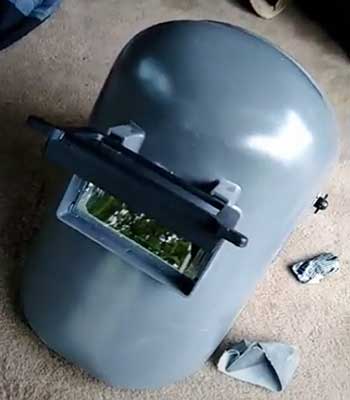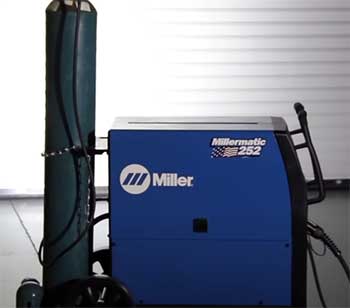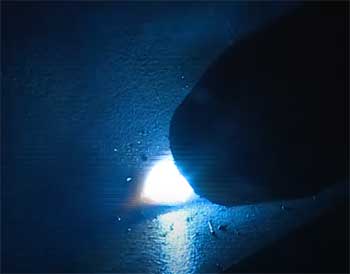Protective helmets are pretty much the 101 of high-risk jobs like welding. Tigerhood and Pipeliner are the most common choices for this.
They’re similar so differentiating can be hard. But if you look closely, you’ll notice differentiating factors like build, durability, and cost.
Your protective helmets are responsible for life-saving protection. So you have to pick something that protects you without being an obstacle.
Both Pipeliner and Tigerhood are excellent for that. But which one should you go with if you have to pick only one? Here’s a comparison to help you decide.
A Quick Summary of Comparison
| Feature | Tigerhood Welding Hood | Pipeliner Welding Hood |
| Build | Heavier, bulky | Lighter, less bulky |
| Durability | Stronger | Strong |
| Cost | Affordable | Less affordable |
If you want a more detailed breakdown of this, keep reading below!
Key Differences Between Tigerhood And Pipeliner Welding Helmet
They’re just hoods, right?
Yes and no. they’re just hoods, but they’re also protection for you. Tigerhood and Pipeline – both models are amazing. This is why it is hard to compare them.
But the comparison isn’t completely impossible. When you do a side-by-side comparison, you’ll notice some major differences between these two. Build, durability, and cost are the most visible differences between them.
Let’s see how these things make Tigerhood and Pipeliners different.
- Build

This is the most obvious difference between the two hoods.
Tigerhood is bigger, heavier, and bulkier.
It also is edgier at the front. If you enjoyed RoboCop, you’ll probably love it.
The weight may not feel heavy at first but as the hours go on, you’ll start feeling it.
Tigerhood is longer than Pipeliner too.
That means you’ll get some extra neck coverage. But the problem is, it will hit your chest when you’re trying to look down.
Pipeliner hoods on the other hand are the opposite.
They’re lighter and much more compact. The front is also more rounded. The hood is smaller than Tigerhood. That means you’ll get less neck coverage.
But that’s not the issue. The issue is, Pipeline will hit your chin when you’re looking down unless you trim it.
On the flip side, this makes the hood more stable and less slippery. Tigerhood isn’t stable like this, it slips off pretty easily.
- Durability
Tigerhood is usually made of heavier materials. Whether it is for the material weight or its durability, Tigerhood is seriously sturdy. They’re perfect for grinding work and they can stand pretty much everything you throw their way.
Pipeliner is slightly behind in this. The hoods are slightly less durable than Tigerhood. Not much, but it is still noticeable. It could be because of the material or it could be something the design resulted in.
Either way, if durability is your focus then Tigerhood is ahead of Pipeline.
- Cost
Tigerhood is so popular for multiple reasons and the price tag is one of them. They are fairly cheap, enough to be affordable to beginners. This also makes replacing them easier.
Pipeliner is one pricing level above Tigerhood. The cheapest price range costs the same as a mid-level Tigerhood. So if you’re an entry-level welder, this might not be the most convenient option for you.
Which Welding Helmet Should You Choose?

As you know now, Tigerhood and Pipeliner are like twins.
So it is hard to differentiate between them.
This makes it harder to pick one between them.
Everything Tigerhood has, Pipeliner has too. That means your job of picking one just got harder.
And the answer to this question took a turn from simple to complex.
Picking one of them is hard, but not impossible. You’ll need to do some serious calculations and trade-offs.
The best way to put your foot down on this is to decide what you want to prioritize in your helmet. Once you have that down, the trade-offs and everything will become much easier.
If you’re looking for something a little cheap and durability is your main focus, Tigerhood is a good choice for you.
Tigerhood will cover more of your neck, comes with a protective flip guard, and will stand through a good beating. It doesn’t get any better for your money’s worth.
The problem is, the durability will cost you your convenience. You’ll get better neck coverage but it will hit your chest. Plus the weight will wear you down pretty quickly.
If you can afford to spend a little more coin on this and want something lighter, Pipeline is your best option. It is lighter, more convenient, and less bulky. They also sit better on your head so there’s another plus.
But the Pipeline can feel less durable especially if you do lots of heavy grinding. Other than that Pipeliner has pretty much everything down.
Overall, Pipeliner hoods are the better decision here. But if you’re looking for affordable options or want something extra durable (even at the cost of your comfort) then feel free to go with Tigerhood.
Also Read: Lincoln Viking 3350 Complaints.
Frequently Asked Questions (FAQ)
Here are a bunch of questions people usually ask about Tigerhood, Pipeliner, and welding hoods in general.
Pipeliner welding hoods are a compact take on regular welding hoods. This is mostly geared towards pipe welding mechanics and is designed to fit even in smaller spaces.
Mark the area you want to trim. Disassemble the protective eye area and cover the off-limit areas with tape. Trim the untaped area, smoothen up the edges and assemble the protective lenses back up.
Pancake hoods are used to protect the welders’ eyes from UV rays and bright sparks. These also lower the risk of eye issues due to the almost blinding light.
Final Verdict
You can definitely get a do-over on your welding hood but that will cost time and money. So picking the right hood is important. As hard as the Tigerhood and Pipeliner debate gets, you need to know both sides to pick the best option for yourself.
Overall, Pipeliner is the better choice here. But if you’re specifically aiming for durability (or affordability), then Tigerhood is a solid option too.

